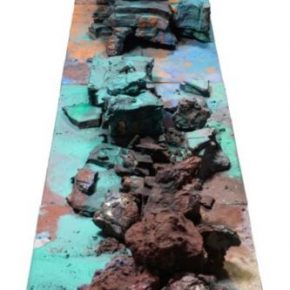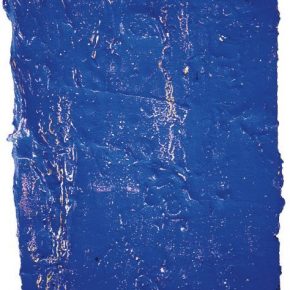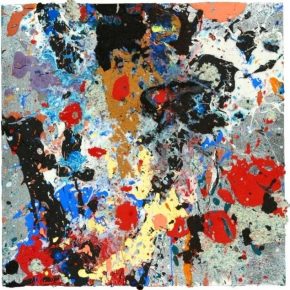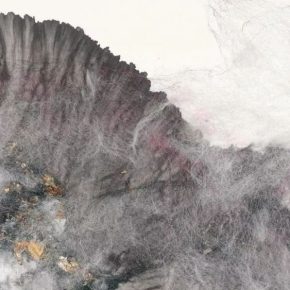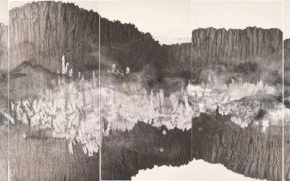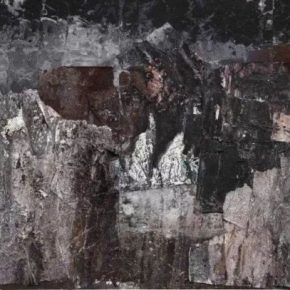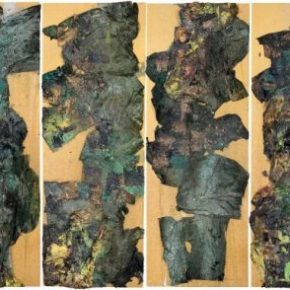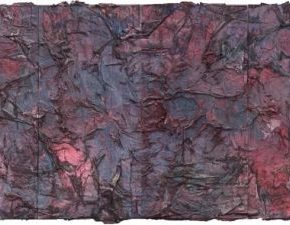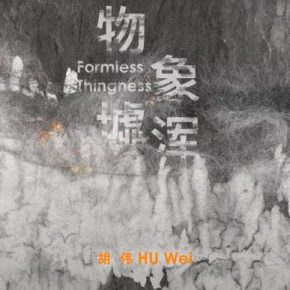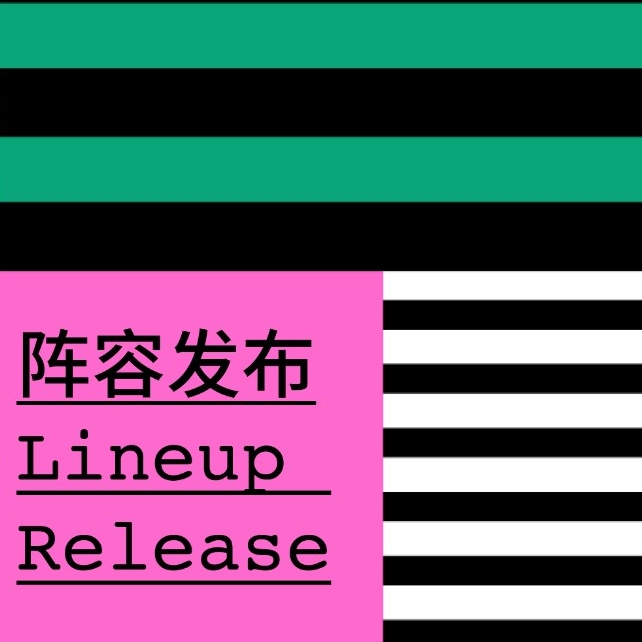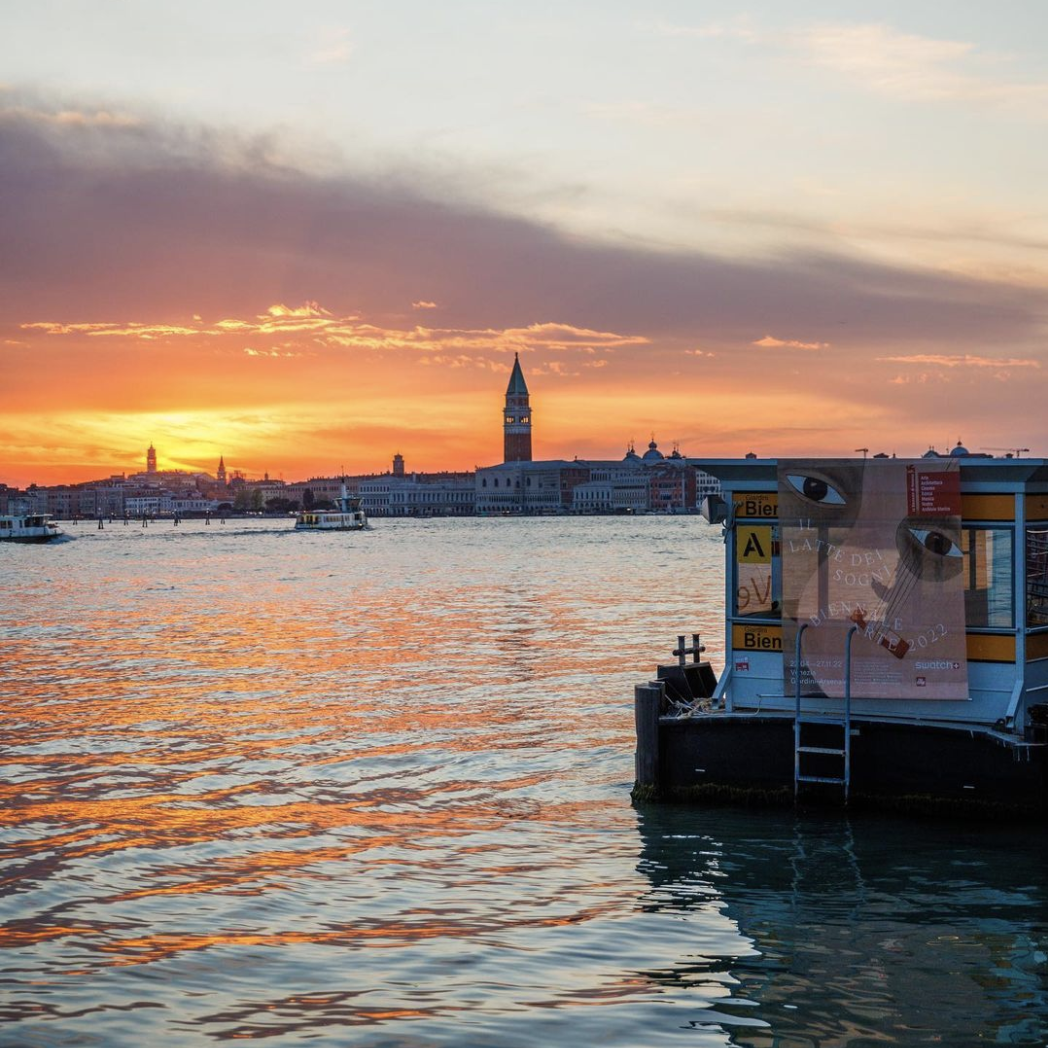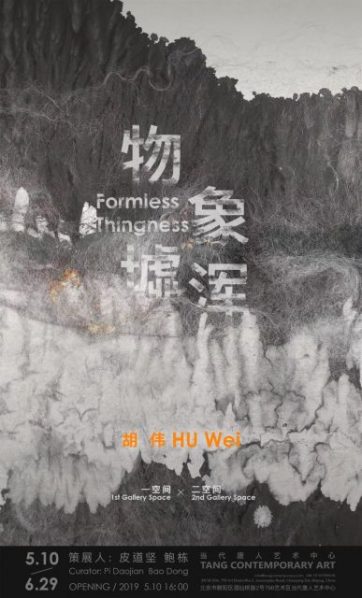
Hu Wei’s art begins with traditional Chinese painting, expanding the traditional medium of ink into mixed media and elevating a technical medium to ontological “thingness.” In the end, he creates deeper links to the Chinese aesthetic tradition within contemporary artistic creation.
In this exhibition, we understand and discuss Hu Wei’s work through things and appearances. The artist creatively uses many materials and objects, such as rice paper, ink, mineral pigments, metal, ceramic,wood, shells, silk, cotton, and hemp… The process of transforming materials into language gives the specific properties of things infinite “difference.” More importantly, in this process, “thingness” shifts away from specific materials to become a transcendent spiritual presence. It is a contemporary interpretation of “vigor” from Chinese classical poetry and an Eastern expression of the contemporary spirit.
The exhibition was named as “Formless Thingness” to encapsulate Hu Wei’s artistic methods and describe his aesthetic style, but the organizer was also attempting to use this as a way to explore the richspiritual content of the deeper levels in his works.
This is Hu Wei’s largest solo exhibition to date, and it represents an importantpart of Tang Contemporary Art’s mission to expand the local study of contemporary art.
About the artist
Hu Wei
He was born in 1957, Ji Nan, Shandong Province. Graduated from China Central Academy of Fine Arts in 1982, received bachelor's degree, and stayed at school for teaching. In 1987, he reached Japan sponsored by government, engaged in the research on the comparison of Chinese and Japanese fine arts and the preservation and restoration of ancient paintings with Professor Hirayama Ikuo, the President of Tokyo University ofthe Arts. He gained Master's Degree of Fine Arts from Tokyo University of the Arts in 1991. And gained Doctor's Degree of Fine Arts from Tokyo University of the Arts in 1996. In 2010, he was transferred to National Art Museum of China to serve as Deputy Curator.
He has successively presided over the art project of the National Centre for the Performing Arts, Art concept design project of the Opening and Closing Ceremonies of the Beijing Olympic Games, Olympic Fine Arts in London Olympic Games. Besides, he was honored the "National Candidate for the Hundred Million Talents Project of the New Century" issued by national Seven Ministries.
He took charge of the senior title judge in National Fine Arts Exhibition, National Youth Fine Arts Exhibition, Beijing International Art Biennale, Overseas Study Project of Chinese Young and Middle-aged Artists,China Fine Arts Prize ·Lifetime Achievement Award, and the Fine Arts of Ministry of Culture. He also enjoys special allowance from the State Council.
At present, he is the professor of China Central Academy of Fine Arts, doctoral supervisor of Schoolof Art, Renmin University of China, director of China Artists Association, committee chairman of Comprehensive Materials Painting and Conservation and Restoration Arts Committee. In 1995, the "Hu Wei Exhibition" was held in UNESCO headquarters (50th Anniversary Cultural Celebration Project for the Founding of United Nations). His works have been exhibited or collected in many countries and regions.
About the curators
Pi Daojian (Curator )
Pi Daojian is one of the best-known artscholars and critics in China. Pi received his master's degree from the ArtHistory Department of Professional Arts Institute of Hubei. He is currently the Associate Director of the Curatorial Committee of China Artists Association, member of the Academic Committee of “The Guangzhou Triennial” at Guangdong Museum of Art, Research Fellow of Hubei Museum of Art, and the Senior Advisor of Redtory Art & Design Factory in Guangzhou.
In the 1980s, Pi Daojian participated infounding and editing the “Art Trend of Thought”. He published a collection of papers such as“Contemporary Art and Cultural Choice”, Pi Daojian Volume of Chinese Art Theory Criticism Series”, “Pi Daojian Theory Criticism Selection”: monographs “Chu Art History”, “Chu Art Atlas”; Editor-in-chief for the “Chinese Experimental Ink in 1990s”, “Black and White History:”, “Chinese Art History and Appreciation of Works”, etc.
Bao Dong (Curator )
Bao Dong is an art critic and independent curator based in Beijing. In contributing essays to the artistic dialogue and other forms of involvement, Bao has established himself as aleading curator and critic of work by the new generation. His articles havebeen widely published in art journals and artist monographs both at home and abroad. He has curated many exhibitions for a wide range of art institutions including Ullens Center for Contemporary Art, the Art Center of Chulalongkorn University, Guangdong Times Museum, Shanghai Minsheng Art Museum, etc. He was awarded Asian Cultural Council (ACC) fellowship grant in 2014, and became anominee of Independent Curators International’s (ICI) 2014 Independent VisionCuratorial Award. Recently he was awarded Yishu Awards for Curating Contemporary Chinese Art 2016.
About the exhibition
Dates: May 10, 2019 - Jun 29, 2019
Venue: Tang Contemporary Art Beijing
Courtesy of the artist and Tang Contemporary Art, for further information please visit www.tangcontemporary.com.



